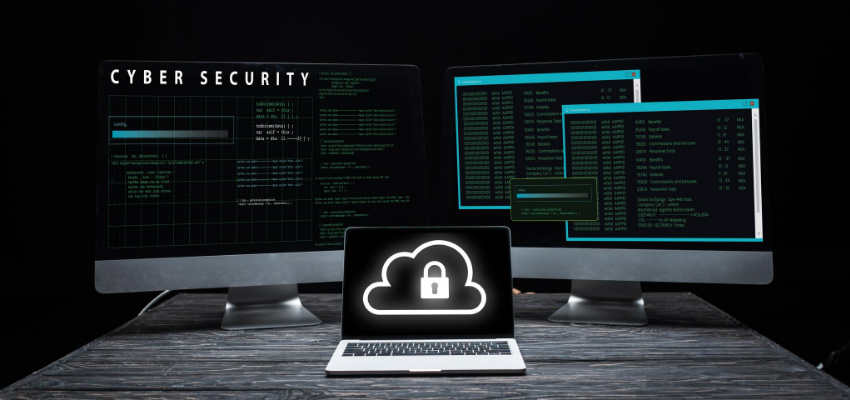Show:
Incorporating Endpoint Security To Your Cybersecurity Strategy: An Essential Guide
In today’s hyperconnected world, where remote work models are the new norm, securing the digital perimeter is crucial for protecting your business. These endpoints are the new frontline against cyberattacks.
While firewalls and intrusion systems are still important, your endpoints are vulnerable entry points that hackers actively target. Malware and ransomware can cause many problems if you don’t secure your endpoints.

That’s why developing robust endpoint measures in your cybersecurity strategy is necessary. It goes beyond blocking attacks; it lets you monitor activity and spot risks proactively. The right endpoint tools can shield devices, detect odd behavior, and give valuable insights into keeping your network safe.
With that said, here is a comprehensive guide on aligning your endpoint and cybersecurity strategies:
Components of Endpoint Security
The good news is that today’s cybersecurity market offers a robust toolbox of endpoint protections. Here are some of the key players:
- Data Loss Prevention (DLP): These tools protect sensitive information. It limits where your team can share or transfer data. Therefore, embrace and understand the importance of endpoint DLP to prevent data leaks from inside personnel.
- Endpoint Detection and Response (EDR): This tool goes beyond detection. It allows you to actively respond to threats on devices in real time.
- Application and Device Control: You can use this strategy to restrict access only to approved apps and devices. This prevents data theft through unauthorized entry points.
- Automated patch management: It updates your devices quickly to close vulnerabilities. Slow patching creates windows for attackers to slip through.
- Antivirus and Anti-Malware: These scanners are vital for catching the most common risks, such as malware attacks. They leverage machine learning and behavioral analysis to detect even the most evasive threats.
With such capabilities, endpoint security shifts from passive defense to active threat hunting. You can proactively stop attacks in their tracks and mitigate damage.
Understanding The Need For Endpoint Security
The first step is understanding the importance of endpoint security, especially now that cyber threats have evolved beyond malware. Hackers are getting sneakier with targeted attacks specially crafted to slip past defenses. That’s why securing endpoints like laptops and phones is crucial now.
Some examples of sophisticated threats:
- Phishing schemes: These trick users into clicking malicious links that infect devices.
- Zero-day exploits: Hackers take advantage of vulnerabilities before you can patch your systems. You’ll need real-time monitoring to catch these.
- Ransomware: This is one of the scariest yet most common threats. It encrypts data for ransom. Just one infected device can spread across networks.
With so much sensitive data, prevention tools like firewalls aren’t enough. You need advanced endpoint security that actively monitors for odd activity and stops threats in their tracks.
The risks are massive, from lost data to huge recovery costs. Endpoint security helps avoid operational disruptions and data breaches that could harm your business.
Integrating Endpoint Security into Your Cybersecurity Strategy
When it comes to endpoint security, having the latest tools is great, but technology alone isn’t enough. To prevent cyber threats, you need a strategy that looks at the bigger picture.
Here are a few tips to consider:
1. Assess Your Current Security Strategy
Start by assessing your current security posture. Identify the types of endpoints within your network and understand the potential vulnerabilities each presents. Ensure these assessments include an inventory of devices, applications, and data flow. It’ll allow you to see potential gaps and risks to tailor security accordingly.
2. Define Your Security Requirements
The next step is to define your specific security requirements based on the assessment. Consider the threats your organization will likely face and how endpoint security can mitigate these risks.
Laying out your security priorities and needs will allow you to customize endpoint protections accordingly. However, the requirements may vary depending on the industry, regulatory compliance needs, and data handled.
For instance, requirements for a cutting-edge technology firm will be very different from those of a starting law office.

3. Choose The Right Endpoint Security Solution
Once you’ve defined your protection requirements, it’s time to pick the right endpoint security tools. Consider solutions that:
- Offers all the protections you identified, i.e., antivirus, firewalls, and data encryption. Don’t settle for limited tools.
- Scales up quickly as your business grows and more endpoints are added. Flexibility is key.
- Allows you to manage all endpoints centrally through unified policies and dashboards. You’d want visibility and control.
- Integrates well with your existing technology infrastructure and other security tools. A feature-rich but standalone product won’t maximize value.
- Provides actionable insights into your security posture through detailed reporting. It’s crucial to know where you stand.
Essentially, choose comprehensive, scalable tools that give you control and visibility. Also, ensure it addresses the specific threats your business faces.
4. Train and Educate Users
End-users play a crucial role in endpoint security. The strongest endpoint security tools won’t protect your business if your team isn’t careful. Therefore, provide regular training on security best practices. Ensure to cover the following:
- Phishing awareness: Educate your team on how to spot and report suspicious emails and links that could install malware. Conduct simulated phishing tests to see if they understand the concept.
- Safe data handling: Provide clear guidelines on storing sensitive files securely in encrypted folders, never emailing customer data, and properly disposing of printed records.
- Strong passcodes: Enforce complex passwords and multi-factor authentication wherever possible. Ban simple codes hackers can easily bypass.
Ongoing staff education reduces mistakes that can derail endpoint security. It also fosters an organizational culture focused on protection. Supplement with posters, newsletters, and events to reinforce security. A human firewall of educated staff is your first line of defense.
5. Update and Patch Endpoints Regularly
Once your endpoint security tools are in place, ensure all devices stay updated for ongoing protection. Here are some tips you may want to consider:
- Enable automatic updates wherever possible. This takes the work out of manual patching for IT teams.
- Have a schedule for testing and deploying patches quickly when risks are critical. Ensure you prioritize them depending on severity.
- Segment your network so that unpatched devices don’t expose everything if compromised. Consider isolating them until they’re fixed.
- Monitor endpoints continually and enforce compliance policies to ensure the team installs critical patches on time.
Staying on top of system patching closes vulnerabilities before attackers can exploit them. It’s vital to endpoint security, especially with today’s sophisticated threats.
6. Monitor and Respond to Threats
With your endpoint tools in place, you must actively monitor them to get the most value. Implement solutions that offer real-time monitoring and alerts for suspicious activities. Also, have a response plan to quickly contain and mitigate threats when detected.
Conclusion
Making endpoint security part of your cybersecurity strategy is an ongoing process of adaptation and improvement. With the right endpoint security plan, you can safeguard your priceless organizational data and keep operations running smoothly.

 Return to Previous Page
Return to Previous Page








